I was standing in the middle aisle of my local garden center holding a tray full of plants. After having spent the better part of fifteen minutes perusing the hanging plants section and imagining different plant combinations for a new hanging basket, I had picked a pleasing selection of the classic million bells (Calibrachoa) in various warm colors. I had also chosen a pre-mixed pot of petunia and verbena.
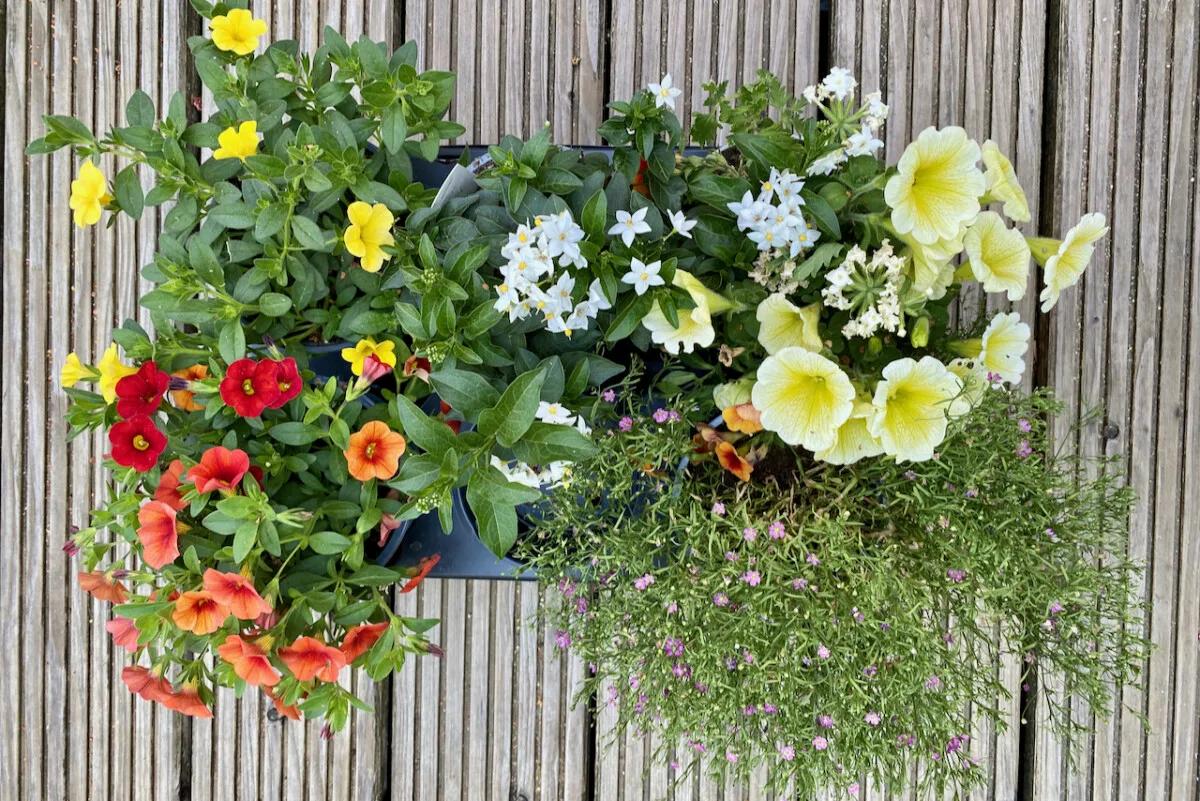
I was satisfied with my choices. Or so I thought. Because as soon as I set eyes on it, my hand reached for a gorgeous pot of Solanum jasminoides (also known as potato vine, although it has nothing to do with actual potatoes). Surely it will be the perfect addition to my hanging basket, right?
Let’s smoothly segway to the theme of this article: hanging basket mistakes. Because I had just made one by going off-script and buying a plant that would definitely not be suitable for that purpose.
Mistake #1: You’re choosing the wrong plants for hanging baskets.
Let’s start with the mistake that I was making. I went shopping armed with a list of plants suitable for hanging baskets. I didn’t ignore the list, or my previous knowledge of designing hanging baskets, but I thought I could improvise on the spot.
That’s how I ended up buying the potato vine, which is a climber, not a hanger plant. My mistake didn’t break the bank since the extra plant was quite small, but now I have to buy another large pot and find a suitable spot for the Solanum jasminoides. (Having to find ‘just one more pot’ seems to be a recurring theme in the life of a gardener.)

So before you put together your hanging baskets, make sure you add plants that are fit for this purpose. A few of the most popular plants for baskets include
- Petunia
- Million bells (Calibrachoa)
- Sweet alyssum (Lobularia)
- Impatiens (Impatiens walleriana)
- Moss rose (Portulaca grandiflora
- Pelargonium geraniums
- English ivy (Hedera)
- Burro’s Tail (Sedum morganianum)
- Trailing Pansy (Viola wittrockiana)

And while we’re talking about suitable plants, it’s best if you avoid using plants that grow too tall such as cornflowers, poppies and snapdragons. They will flop over in no time, unless you’re using a miniature cultivar.
Mistake 2: You’re using the wrong size basket.
I’ve worded this ambiguously (what’s “wrong” anyways?) because it’s very subjective. The “wrong” size could be one that’s too small for your plants and your climate. The trouble with small hanging baskets is that they dry out very quickly, especially if you place them in full sun. So if you’re not getting enough rain or if you’re planting thirsty plants, you might want to upgrade.
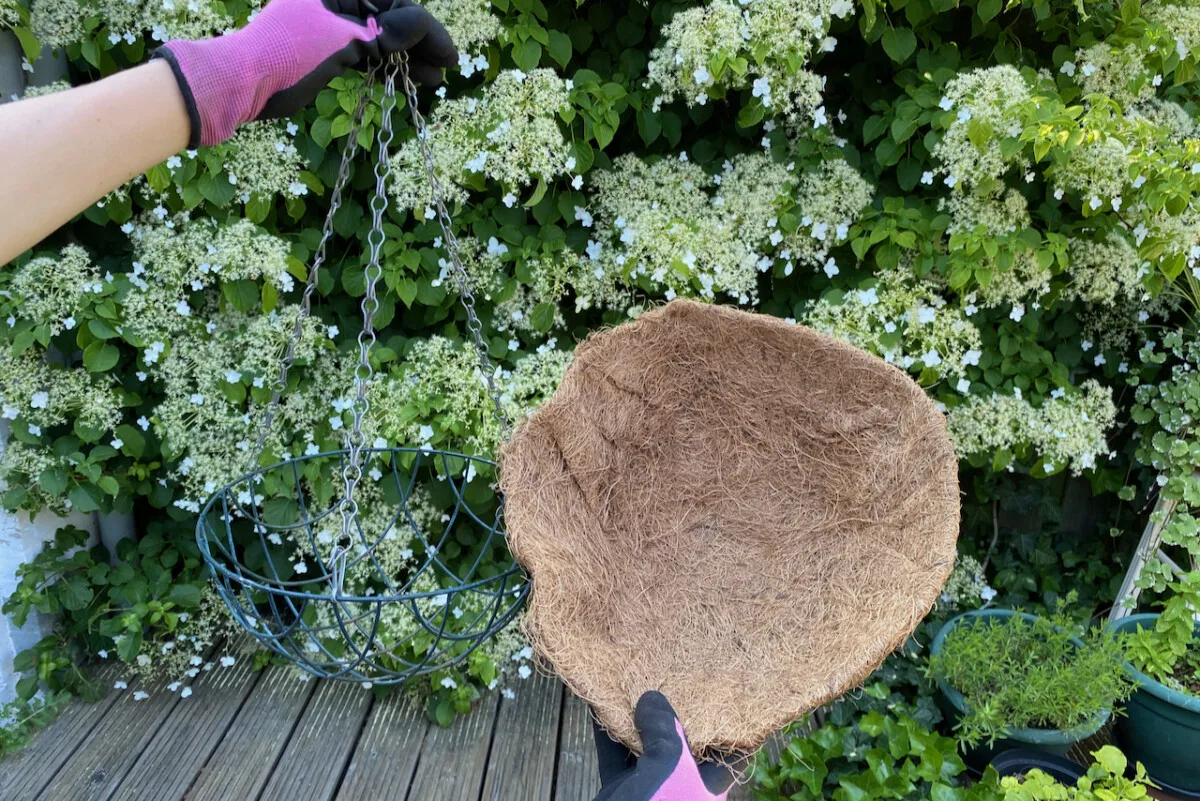
Another problem with using small baskets is that there’s no room for enough potting soil. Plants need soil to anchor their roots in, and poor root development will usually inhibit plant growth.
But if you only have space for a small basket, that’s better than no basket, right?
On the other hand, large hanging baskets are also a problem, due to how heavy they get when they’re saturated with water.
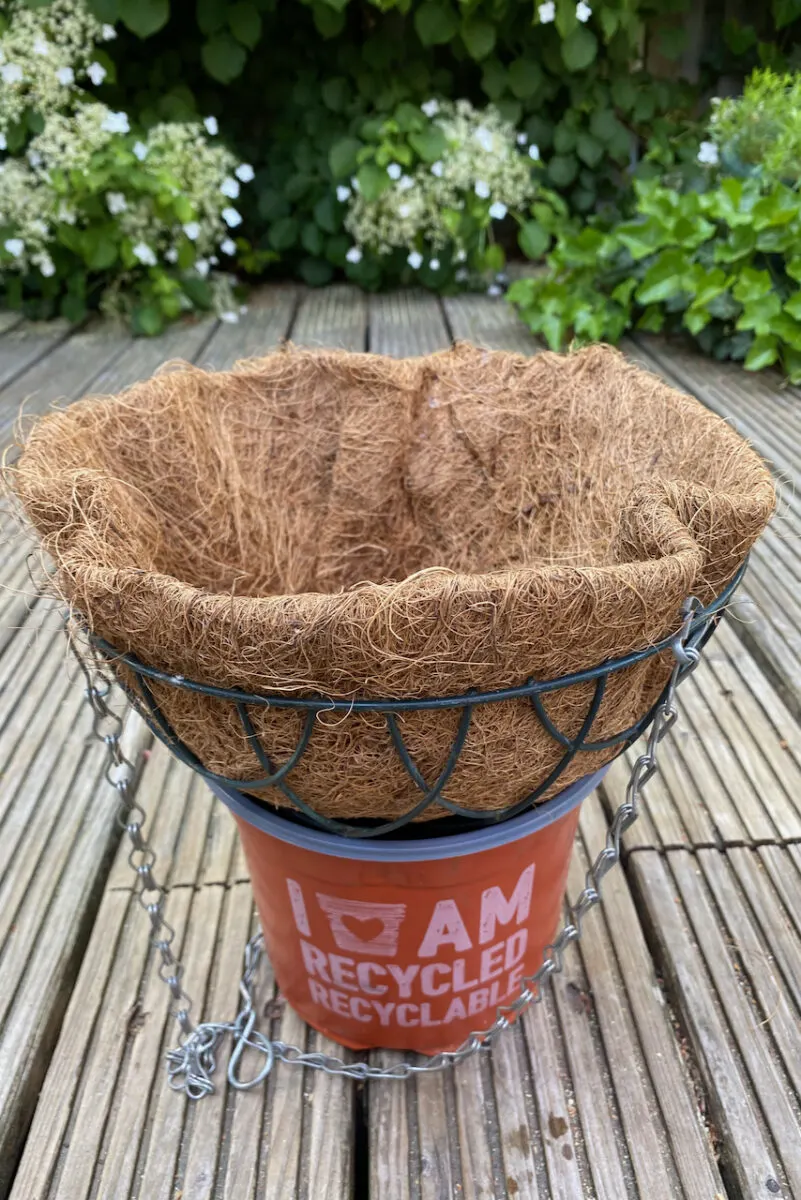
The basket that I’m planting this summer is mid-sized, about 15 inches (38 cm) in diameter at the top. It’s not too large to be a problem, nor too small to crisp up easily.
Mistake 3: You’re not lining your baskets.
Luckily, I haven’t made this mistake in a long time. But I do remember making it in a fit of frugal DIY years ago. I had found a super cute colander for a dollar and, with the help of some twine and a little knot work, turned it into a hanging basket.
No, I didn’t line the colander, why do you ask? As a result, all the water drained out as soon as I poured it. By the end of that summer, I was so done with watering that it put me off hanging baskets for years. You live, you learn, you line your baskets.
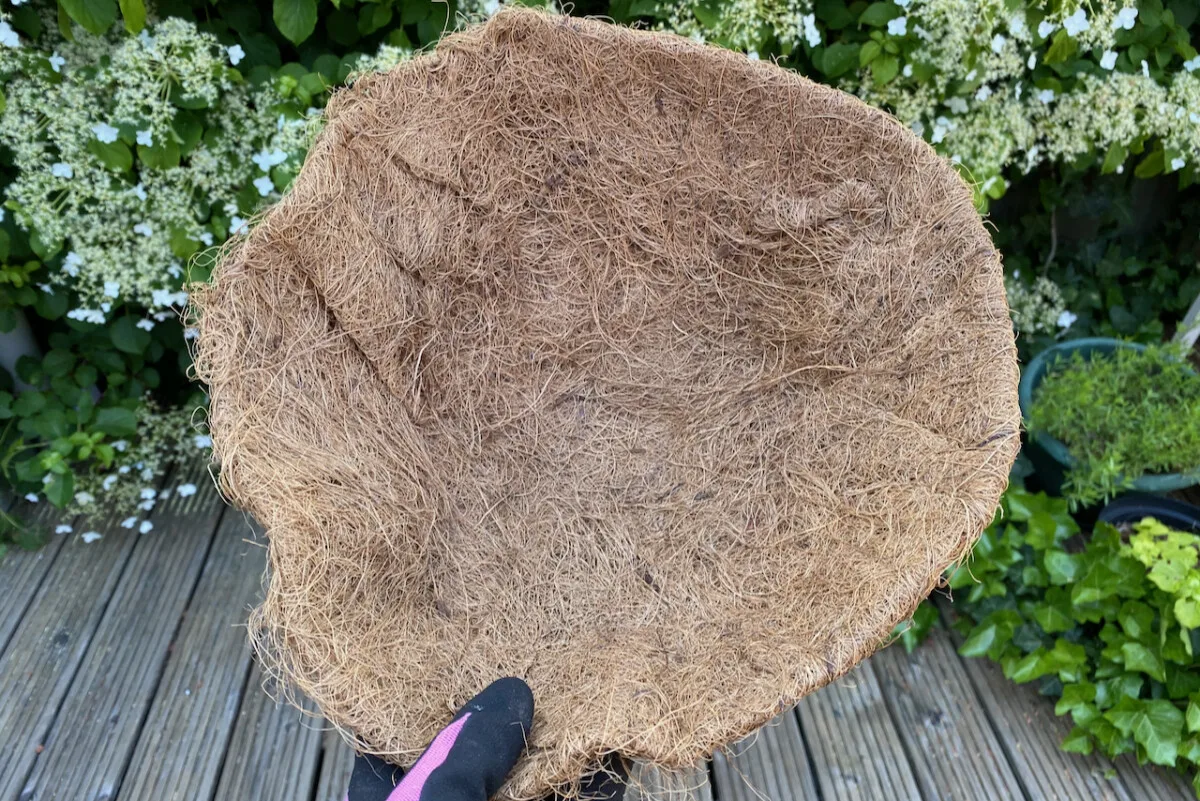
These days, I use coco coir mats to line my hanging baskets. Coco coir is a natural fiber and a byproduct of processing coconut husks. True, it comes with its own environmental impact since it’s imported from so far away. That’s why I make sure to treat it well and make it last. I clean it, dry it and store it indoors over the winter months. So far, I haven’t had to dispose of any of my older coir mats. But when the time comes, I’ll just compost them.
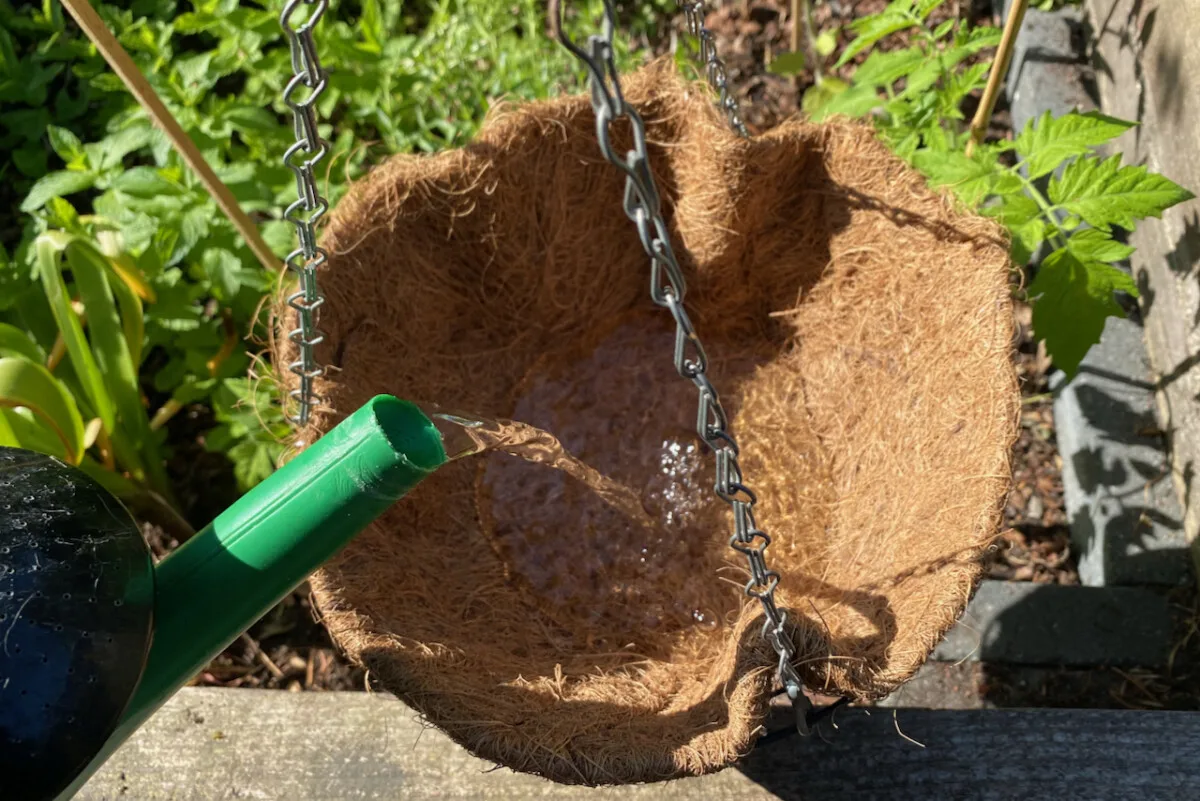
Coco husk mats are also very versatile. When I went shopping for this hanging basket, I couldn’t find the right size to match the wire basket I already had. So I just bought a larger mat, soaked it well to make it more malleable and creased it a bit to fit the basket.
Mistake 4: You’re not using enough potting soil.
First, let’s make this clear. You have to use potting soil for containers. You should avoid using pure compost or soil from your garden. But make sure you use enough soil for the size of the basket.
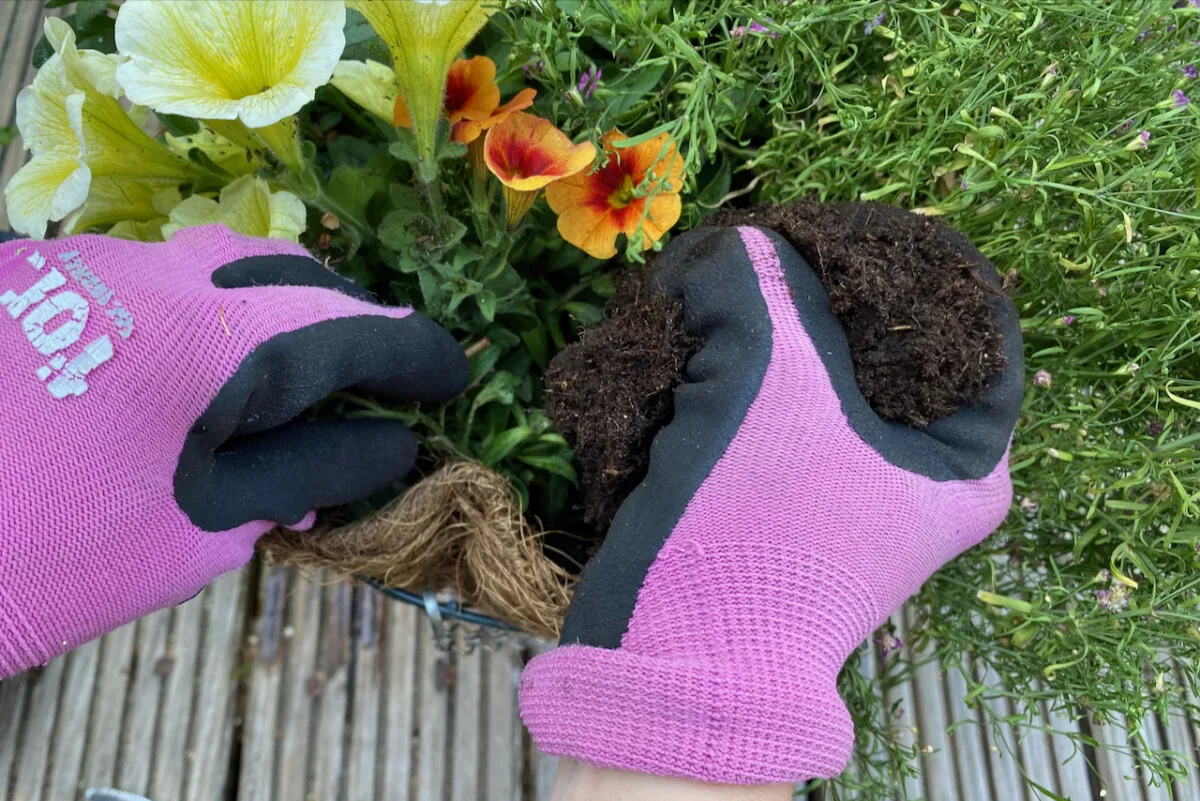
Remember that the potting soil will be more compacted due to gravity playing its part. As the basket sways in the wind and gets rained on, the potting soil will compress, leaving some room at the top. Make a note to check the soil every month or so and top it up, if needed.
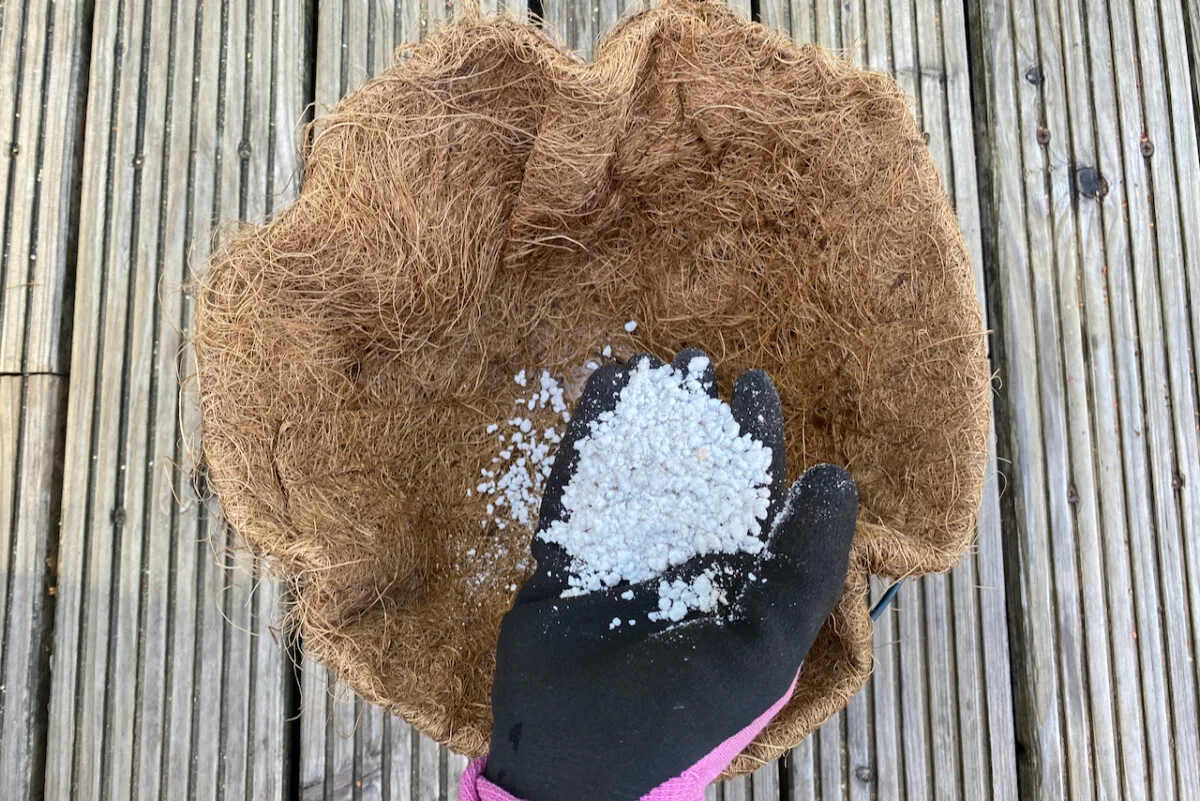
I try to prevent compaction, as much as possible, when I’m planting the hanging basket. I do this by adding a handful of perlite (or any other material that improves aeration) to the bottom of the basket before I add any plant to it. I then mix the perlite in with a light layer of soil.
CONTINUE READING IN PAGE 2




